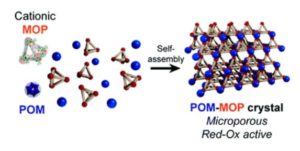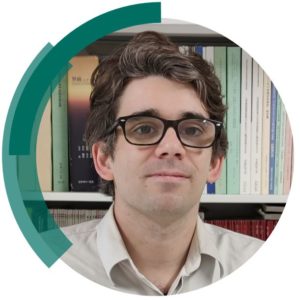This April, Benjamin Le Ouay reached an exciting ChemComm Milestone when he published his first independent research article in our journal. You can read Benjamin’s #ChemComm1st article here: Crystalline assembly of metal–organic polyhedra driven by ionic interactions with polyoxometalates
We spoke to Benjamin about his experiences as a first-time author. Read more in our interview below.
What are the main areas of research in your lab and what motivated you to take this direction?
My research group is focused on building new functional materials using metal-organic polyhedra (MOPs) as elementary sub-units. During my previous post-doc experience, I worked on the surface chemistry and supra-particle assembly of Au and Ag nanoparticles, then on MOFs as reactive hosts for polymer guests. Thus, I worked with both nano-objects and with coordination chemistry materials. The current research topics are at the junction of all these previous experiences. I am fascinated by how modular design principles and controlled assembly and disassembly of structures can lead to unprecedented materials’ properties. Porous dispersible cages offer an excellent platform to achieve this goal through careful control of their surface chemistry.
Can you set this article in a wider context?
In this article, I use anionic polyoxometalates (POMs) to drive the assembly of MOPs into crystalline porous networks. Electrostatic interactions are rarely considered when building microporous materials, despite being one of the main stabilizing forces in traditional solid-state chemistry. However, they possess several features that make them very interesting for functional materials chemistry. Therefore, I want to show how the assembly of porous charged MOPs with POMs or other functional counter-ions can lead to a wide variety of new materials with high performances or even unprecedented properties.
What do you hope your lab can achieve in the coming year?
This first article showed the assembly of typical Keggin POMs with two isostructural MOPs. Many more assemblies can be considered, by multiplying the diversity of POMs by that of MOPs. I also plan to dedicate some research effort on preparing other types of functional porous salts.
Describe your journey to becoming an independent researcher.
Becoming an independent researcher took me about seven years. After two years of post-doc in Switzerland, I considered permanent positions, but I felt I was missing something in my chemistry expertise, notably concerning the more “molecular” aspects of materials chemistry. So I went to Japan to work on Polymer@MOF composites. This project was very formative and made me think a lot about how local but also mesoscale interactions can be harnessed to give innovative properties to materials. I also got married in Japan. After five years, I felt ready to take a position and an opportunity offered itself in Fukuoka, so here I am.
What is the best piece of advice you have ever been given?
When you try something, no one can guarantee your success, but if you set yourself for failure, then for sure you will fail. So, always adopt a positive attitude for anything you attempt.
Why did you choose to publish in ChemComm?
With this project, I felt that the most important was to report the main concept early on, before spending more time exploring and taking advantage of the wide diversity of structures that can be reached. For this reason, I chose to report these results as a communication. ChemComm offered the perfect combination of fast publishing, broad audience, and recognized quality.
You can find Benjamin’s #ChemComm1st article and more in our collection. Don’t forget to head over to our Twitter page for the latest #ChemCommMilestones news and updates.












